Grant call for Resource Efficiency, Building Efficiency and Sustainable Urban Solutions
How do tomorrow’s industrial spaces look like? What technologies will allow us to sustainably manage industrial facilities, reduce business and environmental costs, while maximising the comfort of occupants? Through this S$5,000,000 grant call, JTC aims to support the development of cost-effective and productive solutions to increase the efficiency of buildings.
Frequently Asked Questions
What are the steps required for submission?
Complete your proposal using the template provided. Submit your proposal via button next to each Grant Call on the “Submission Process” webpage.
Do I qualify for the grant if my technologies and solutions are not in the Research and Development (R&D) stage?
Refer to the table below that provides “Definition of TRL”. We are interested on proposal that involves R&D (TRL 3 to 4) and Test-bedding stages (TRL 5 to 7).
I am based in overseas, without a presence in Singapore. Do I qualify?
Yes. We will consider overseas or international industry partner. We will encourage the principal investigator to register their interest to collaborate with one of the JTC-I3 Research Centre (local research institutions based at NTU, NUS or SUTD). As test-bedding phase has to be conducted in Singapore within JTC’s developments, having a local collaborator is easier to manage the milestones. All travelling costs (in SGD) incurred shall be factored in during the submission of the proposal, stating the total funds required.
Must the approval fall within the focus areas of this grant call?
If the proposal does not meet the focus theme of this grant call but are relevant to the other themes under the JTC I3 Partnership Program initiative, it will still be considered and evaluated. Such other themes can be found at JTC corporate website at www.jtc.gov.sg
What will happen to the Intellectual Property (IP) of the technology developed?
The proposal must include details such as technology acquisition, payment of licensing fees, and purchase of copyrights/ trademarks/ patents and explain how they are relevant to the proposed research and test-bed for the background IP where applicable. A copy of the quotation from the source may be required. Foreground IP developed at the R&D stage upon award of grant shall be jointly owned by the applicant and JTC.
What will happen upon successful completion of test-bedding (e.g. commercialization of the technologies)?
Upon successful completion of project, JTC may consider to call for open tender for implementation/ deployment, subject to the relevance and applications of technologies/ solutions at that point in time.
What are some of the out-of-bound markers?
Technologies tested shall be sustainable and will not have any adverse impact to Singapore’s environment. Technologies shall not involve the use of dangerous, hazardous and toxic chemicals. Technologies that are off-the-shelf or already available in the marketplace shall not be considered.
In the event variation charges arise during the R&D phase or the Test-Bedding phase, will additional grant be given?
Grant is disbursed at a maximum of three defined milestones based on reimbursement. Total grant disbursed at each completion of first two milestones (if applicable) shall be capped at 50% of the total approved grant. Milestones are defined as completion of development phases of the proposal.
If the R&D phase of the project does not yield satisfactory resutls, will the grant be disbursed for the expenses incurred for this phase?
Yes. Grant will still be disbursed for the R&D phase (defined as phase 1) of the proposal, subject to the evaluation by JTC or JTC’s appointed agent.
Intellectual Property Policy and Submission Agreement
All information submitted to the applicant company as a potential solution through this site should be considered non proprietary, non
confidential, and in the public domain. By submitting information on the submission form, you agree and warrant that:
• This information is non-confidential and publishing this information does not interfere with the intellectual property rights of any party other
than yourself.
• You have the right to disclose this information to us, and we (and other third party as authorized by us) may use this information for any
purpose as we deem appropriate.
• At a later stage, we (and any third party as authorized by us) may request confidential or proprietary information from you.
• You acknowledge and accept the conditions of use by sending us the information in the proposal.
Definition of Technology Readiness Level (TRL)
| Phase | TRL | Definition (simplified definition for reader) |
|---|---|---|
| Commercialization | TRL 9 | Actual system “flight proven” through successful mission operations Ready for full production mode |
| Test-bedding | TRL 8 | Actual system completed “flight qualified” through test and demonstration (Ground or Flight) Initial production and roll-out in real scenarios |
| TRL 7 | System prototype demonstration in space environment Actual system developed at beta-version for validation |
|
| TRL 6 | System/subsystem model or prototype demonstration in relevant environment (Ground or Space) Prototype validation in relevant environment (ground or space) |
|
| Value Proofing | TRL 5 | Component and/or breadboard validation in relevant environment |
| TRL 4 | Component and/or breadboard validation in laboratory environment | |
| Concept Proofing | TRL 3 | Analytical and experimental critical function and/or characteristic proof-concept Laboratory studies and analysis |
| TRL 2 | Technology concept and/or application formulated | |
| TRL 1 | Basic principles observed and reported |
